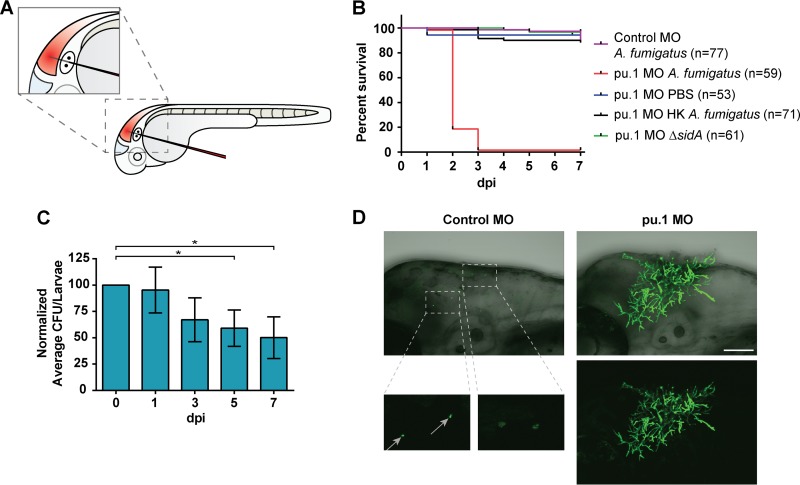FIG 1.
Aspergillus fumigatus causes invasive disease in immunodeficient larvae. (A) Cartoon of zebrafish larvae at ∼32 hpf undergoing microinjection of conidia into the hindbrain ventricle (shaded red) through the otic vesicle. (B) Immunocompetent larvae (control MO) are not susceptible to infection following challenge with A. fumigatus (gpdA::GFP::his2A). Treatment with the pu.1 morpholino (pu.1 MO) depletes morphant larvae of macrophages and neutrophils and renders them highly susceptible (P < 0.0001) to infection following challenge with A. fumigatus. pu.1 morphant larvae showed no mortality following injection of PBS, heat-killed A. fumigatus (HK), or the classically avirulent ΔsidA strain of A. fumigatus deficient in siderophore biosynthesis (P > 0.05). Survival data are pooled from three independent experimental replicates, and P values were calculated by Cox proportional-hazard regression analysis. (C) Immunocompetent larvae significantly reduce viable conidia by days 5 and 7 postinfection. *, P < 0.05 as determined by repeated-measures ANOVA and Tukey's HSD method for multiple-comparison test. (D) At 2 days postinfection, control larvae harbor ungerminated conidia (gray arrows), while macrophage- and neutrophil-deficient pu.1 morphants succumb to invasive A. fumigatus (gpdA::YFP) growth. Scale bar, 100 μm.

